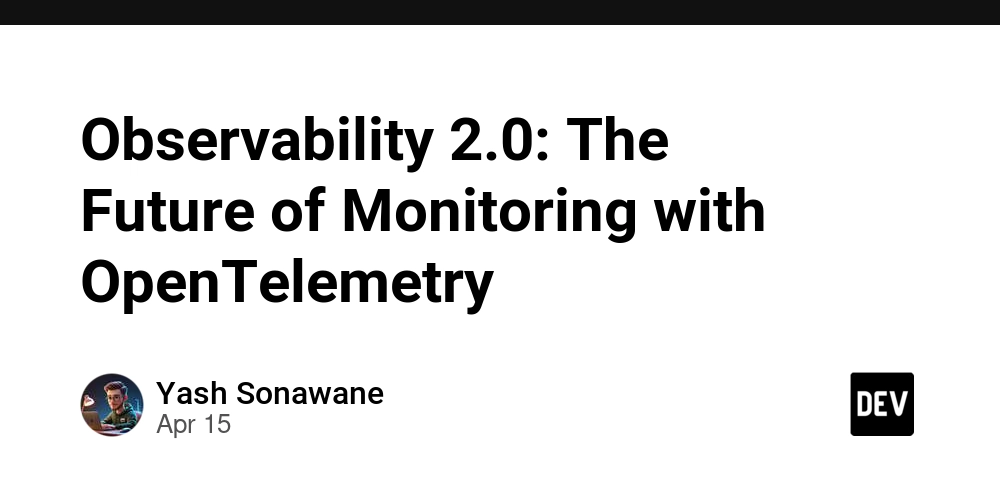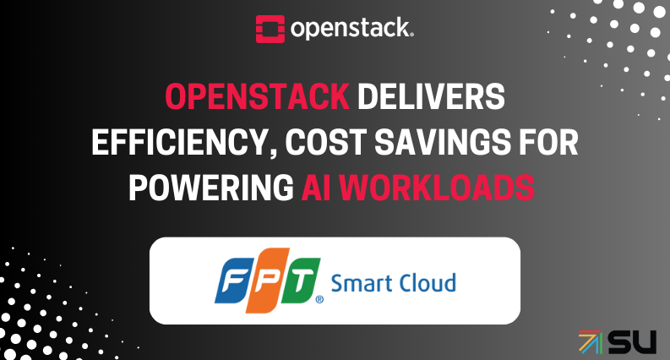Devops News
Medium
127

Image Credit: Medium
Getting Started with GitHub Actions and Workflows for Terraform Deployment with Azure Cloud
- GitHub Actions is an automation tool that allows developers to create CI/CD pipelines.
- A GitHub Workflow is a set of automated tasks defined in a YAML file.
- GitHub Actions and Workflows automate software development, saving time and improving productivity.
- GitHub Actions and Workflows can be used to automate Terraform deployments on Azure.
Read Full Article
7 Likes
Medium
333

Image Credit: Medium
Is Your Business Ready for Kubernetes?
- Kubernetes is powerful, flexible, and scalable, but not a one-size-fits-all solution.
- The appropriate time to consider Kubernetes depends on the size and stage of your business.
- For small businesses and simple tech stacks, Kubernetes is overkill and better alternatives exist.
- For businesses with distributed teams, numerous microservices, and serious uptime requirements, Kubernetes is a must-have.
Read Full Article
20 Likes
Dev
59

Image Credit: Dev
Observability 2.0: The Future of Monitoring with OpenTelemetry
- Observability 2.0, powered by OpenTelemetry, is redefining how DevOps teams collect, analyze, and act on telemetry data.
- Observability 2.0 provides end-to-end visibility, contextual insights, automated anomaly detection, and vendor-agnostic data collection.
- OpenTelemetry is an open-source observability framework that standardizes data collection and integrates with various backend observability platforms.
- OpenTelemetry offers features like automatic instrumentation, multi-language support, distributed tracing, and cloud-native readiness.
Read Full Article
3 Likes
Dev
0

Image Credit: Dev
Building a Feature Flag System in Node.js with Redis and Middleware
- Feature flags (also known as feature toggles) allow you to enable or disable functionality without deploying new code.
- This article explains how to implement a feature flag system in Node.js using Redis and Express middleware.
- It provides step-by-step instructions for project setup, Redis client setup, middleware implementation, and usage in routes.
- The article also suggests enhancements like enabling features for specific user IDs or roles, implementing flag variants for A/B testing, creating a dashboard for toggling flags, and using JSON structures in Redis for more complex rules.
Read Full Article
Like
Discover more
- Programming News
- Software News
- Web Design
- Open Source News
- Databases
- Cloud News
- Product Management News
- Operating Systems News
- Agile Methodology News
- Computer Engineering
- Startup News
- Cryptocurrency News
- Technology News
- Blockchain News
- Data Science News
- AR News
- Apple News
- Cyber Security News
- Leadership News
- Gaming News
- Automobiles News
Dev
410

Image Credit: Dev
Linux in Action - File Structure Hierarchy and Its Role in Modern Business
- Linux is a powerful and versatile operating system crucial for businesses due to its customization and flexibility.
- The article covers Linux fundamentals, kernel, distributions, file hierarchy, and its role in tech and business.
- Linux's stability and file structure consistency across distributions make it ideal for various applications.
- Popular Linux distributions include Ubuntu, Debian, Fedora, CentOS, RHEL, Arch, and SUSE, catering to different needs.
- Linux is extensively used in AWS for services like EC2, Lambda, and ECS, providing a secure cloud platform.
- Businesses leverage Linux for server management, system administration with Bash, and DevOps automation.
- Linux file structure showcases key directories starting from the root directory, aiding in system organization.
- RHEL 9 is favored in industries for its stability, security, support, scalability, and compatibility features.
- Understanding Linux enhances efficiency, security, collaboration, and simplifies debugging for personal and professional tasks.
- Mastering Linux empowers users in navigating systems, automating tasks, and excelling in DevOps and server management.
Read Full Article
24 Likes
Dev
104

Image Credit: Dev
Linux Essentials: Taming Files & Directories Like a Terminal Boss
- Creating directories is simple with commands like 'mkdir' to create a single directory or 'mkdir -p' to create nested directories.
- To create files, use the 'touch' command, such as 'touch /Luna.py' to create a single file or 'touch /Luna1.py /Luna2.py /Luna3.py' to create multiple files.
- The 'cat' command is useful for viewing or writing file contents, allowing you to create and write to a new file or append content to an existing one.
- To delete files or directories, you can use the 'rm' command, like 'rm -rvf /Luna1.py' to delete a single file or 'rm -rvf /Luna2.py /Luna3.py /Luna4.py' to delete multiple files.
Read Full Article
6 Likes
Medium
337

Image Credit: Medium
Beyond Frameworks: The Real Weight of Leading Transformation at Scale
- The article discusses the challenges of leading through change and transformation fatigue, emphasizing the importance of alignment in leadership philosophies.
- Transformation fatigue arises from the erosion of alignment over time, not just from stalled progress.
- The article reflects on the impact of leadership divergence on team autonomy and trust in transformation initiatives.
- It highlights the need to defend the transformation mindset amid leadership shifts and misalignment at scale.
- Leading Agile, DevOps, or product transformation requires a focus on mindset more than just adopting frameworks.
- The journey of transformation involves continuous effort to maintain alignment as leadership evolves and ownership changes.
- The fatigue in transformation does not stem from lack of progress but from the ongoing effort to sustain alignment amid shifting leadership philosophies.
- The article shares personal experiences of navigating leadership philosophies and alignment challenges during a transformation journey.
- It underscores the importance of trust in team autonomy and the complexity of defending it across various layers of leadership.
- As organizations grow, sustaining alignment becomes more complex, and the risk of fatigue increases with expanding teams and diversifying roles.
Read Full Article
20 Likes
Siliconangle
269

Image Credit: Siliconangle
On theCUBE Pod: Tariffs, tech volatility and the race for AI-driven cloud leadership
- Artificial intelligence is reshaping cloud computing with AI infrastructure playing a crucial role in enterprise strategies.
- Hyperscalers are focusing on building full-stack AI solutions and developer-friendly tools.
- Google Cloud's growth is driven by AI infrastructure, highlighting the shift in cloud computing dynamics.
- The importance of delivering full-stack AI solutions is transforming cloud providers' strategies and partnerships.
- AI-first approach is influencing cloud platforms to prioritize real-world AI applications and developer experience.
- Market volatility due to geopolitical tensions and tariffs is impacting tech manufacturing and market stability.
- Security concerns are rising in the era of AI-powered advancements, necessitating robust security frameworks.
- Hyperscalers need to balance growth with security to drive future of enterprise cloud services.
- Success in cloud computing is now defined by trusted AI infrastructure, ecosystem depth, and strong security frameworks.
- Podcast discussed the impact of AI, security, and geopolitical factors on cloud evolution and future competitiveness.
Read Full Article
16 Likes
Openstack
310

Image Credit: Openstack
OpenStack Delivers Efficiency, Cost Savings for Powering AI Workloads
- FPT Smart Cloud, a Silver Member of OpenInfra Foundation, uses OpenStack to power AI workloads in Vietnam, compared with proprietary solutions like VMware and Microsoft Azure.
- The company has built a significant OpenStack footprint for AI workloads and high-performance computing, leveraging features like flexibility for customization and mature cloud ecosystem.
- FPT Smart Cloud utilizes OpenStack for managing AI factories in Vietnam and Japan, offering services like bare metal, GPU cloud instances, and Kubernetes provisioning.
- For storage, they employ SAN storage, Ceph, and local NVME, with performance improvements seen compared to VMware.
- In another use case, FPT AI eKYC offers secure digital onboarding and authentication to Vietnamese banks, demonstrating scalability and agility with OpenStack.
- By optimizing existing AI/HPC workloads with OpenStack, FPT achieved a 7% GPU efficiency increase and multi-million dollar savings.
- Technologies like NUMA, HugePage, CPU pinning, and NVMe storage contribute to GPU optimization and network/storage capacity enhancements.
- FPT leverages OpenStack features like DPDK, SR-IOV, and vGPU live migration to improve high availability for critical AI and HPC workloads.
- The 'OpenInfra for AI' Working Group, including members like FPT Smart Cloud, aims to promote OpenStack as the go-to open-source infrastructure technology for AI workloads.
- Collaboration within the OpenInfra community focuses on enhancing infrastructure for AI workloads and addressing software gaps to support AI scenarios.
- Joining the OpenInfra Foundation can support the efforts to advance OpenStack adoption for AI workloads.
Read Full Article
18 Likes
Medium
9

Image Credit: Medium
Why Traditional Docker Images Are Dead: Distroless Is the Future for Secure Spring Boot…
- Distroless Docker Images are a new approach to containerization.
- They strip away unnecessary elements like shell, package manager, and OS-level utilities.
- Traditional Docker images are bloated and insecure due to containing a full operating system.
- Distroless images are gaining popularity for their minimalistic and secure nature.
Read Full Article
Like
Medium
9

Image Credit: Medium
Is Docker Dead for Spring Boot in 2025? Better Alternatives You Need to Know
- Docker's viability in 2025 is questioned as new tools steal the spotlight.
- Docker revolutionized development workflow with its simplicity in packaging Spring Boot apps.
- The container ecosystem has evolved, with Kubernetes moving away from Docker.
- Developers face confusion with the shift towards containerd and CRI-O.
Read Full Article
Like
Dev
283

Image Credit: Dev
Day 4 of 30 Days of Linux Mastery: Getting Comfortable with Vim
- vim is a powerful text editor that lives in almost every Unix-based system.
- Vim operates in three modes: Command Mode, Insert Mode, and Extended Mode.
- Some core Vim commands include: entering Insert Mode, exiting to Command Mode, saving files, quitting Vim, copying lines, pasting, deleting lines, undoing changes, and navigating to specific lines.
- Learning Vim is a valuable skill for Linux users and offers speed and efficiency in editing files.
Read Full Article
17 Likes
Medium
233

Image Credit: Medium
Downstream impact of AI on Engineering Analytics and DORA
- AI tools can positively impact developer productivity by improving code reviews, diagnostics, and workflows.
- DORA metrics, including deployment frequency, lead time for change, change failure rate, and mean time to restore, measure software development and deployment effectiveness.
- Deployment frequency indicates the efficiency of the development process, while lead time for change helps set realistic deadlines.
- Mean Time to Restore and Change Failure Rate provide insights into issue resolution and code quality.
Read Full Article
14 Likes
The New Stack
365

Image Credit: The New Stack
Build Scalable LLM Apps With Kubernetes: A Step-by-Step Guide
- Large language models (LLMs) like GPT-4 have revolutionized AI applications in various sectors by enabling advancements in natural language processing, conversational AI, and content creation.
- Deploying LLMs effectively in real-world scenarios poses challenges due to their demanding computational requirements and the need for scalability and efficient traffic management.
- Kubernetes, a leading container orchestration platform, offers a dynamic framework for managing and scaling LLM-based applications in a cloud-native ecosystem, ensuring performance and flexibility.
- This step-by-step guide focuses on deploying and scaling LLM-powered applications using Kubernetes, essential for transitioning AI models from research to production environments effectively.
- The process involves containerizing LLM applications, deploying them on Kubernetes, configuring autoscaling for fluctuating demands, and managing user traffic for optimal performance.
- Key prerequisites include basic Kubernetes knowledge, Docker installation, a Kubernetes cluster set up, and OpenAI and Flask installation in the Python environment to create LLM applications.
- Steps include creating an LLM-powered application in Python, containerizing it using Docker, building and pushing the Docker image, deploying the application to Kubernetes, configuring autoscaling, and monitoring/logging the application.
- Further enhancements for handling advanced workloads include using service mesh, implementing multicluster deployments, and integrating CI/CD automation.
- Overall, building and deploying scalable LLM applications with Kubernetes can be complex but rewarding, empowering organizations to create robust and production-ready AI solutions.
- Kubernetes' features like autoscaling, monitoring, and service discovery equip applications to handle real-world demands effectively, allowing for further exploration of advanced enhancements.
Read Full Article
21 Likes
Dev
210

Image Credit: Dev
Service Mesh Explained: What's a service mesh?
- Service mesh is an abstract infrastructure layer that manages service-to-service communication, providing traffic control, security, observability, and service discovery.
- In a microservices architecture, services communicate through APIs, and a service mesh enhances the communication process.
- The Control Plane is the core of the service mesh, managing proxies, defining network structure, updating routing tables, and enforcing network policies.
- The Data Plane, within a service mesh, processes communication based on decisions made by the Control Plane to ensure efficient data movement.
- The sidecar proxy in a service mesh handles tasks like service discovery, health checking, routing, load balancing, security, and observability.
- Benefits of using a service mesh include centralized traffic management, enhanced security, resilience, fault tolerance, and improved observability in microservices environments.
- While powerful, service meshes come with drawbacks like increased complexity, performance overhead, steep learning curve, and potential debugging challenges.
- Using a service mesh is not mandatory and should be considered based on specific needs for advanced features like routing, authentication, and observability.
- The service mesh world offers solutions for building smarter, composable infrastructure, emphasizing benefits in resilience, security, and visibility.
- Exploring service mesh concepts can be beneficial for those working with distributed systems, offering insights into its applications and practical use cases.
- Service meshes are part of a broader trend towards more efficient infrastructure, providing value in managing complex microservices architectures.
Read Full Article
12 Likes
For uninterrupted reading, download the app